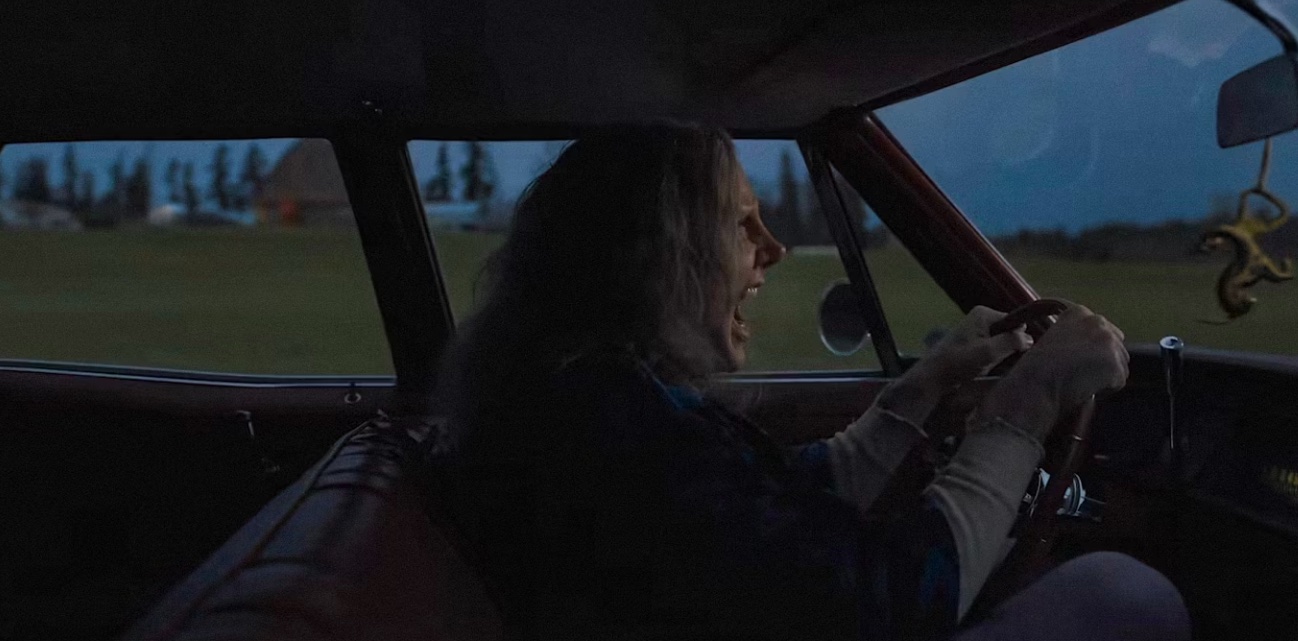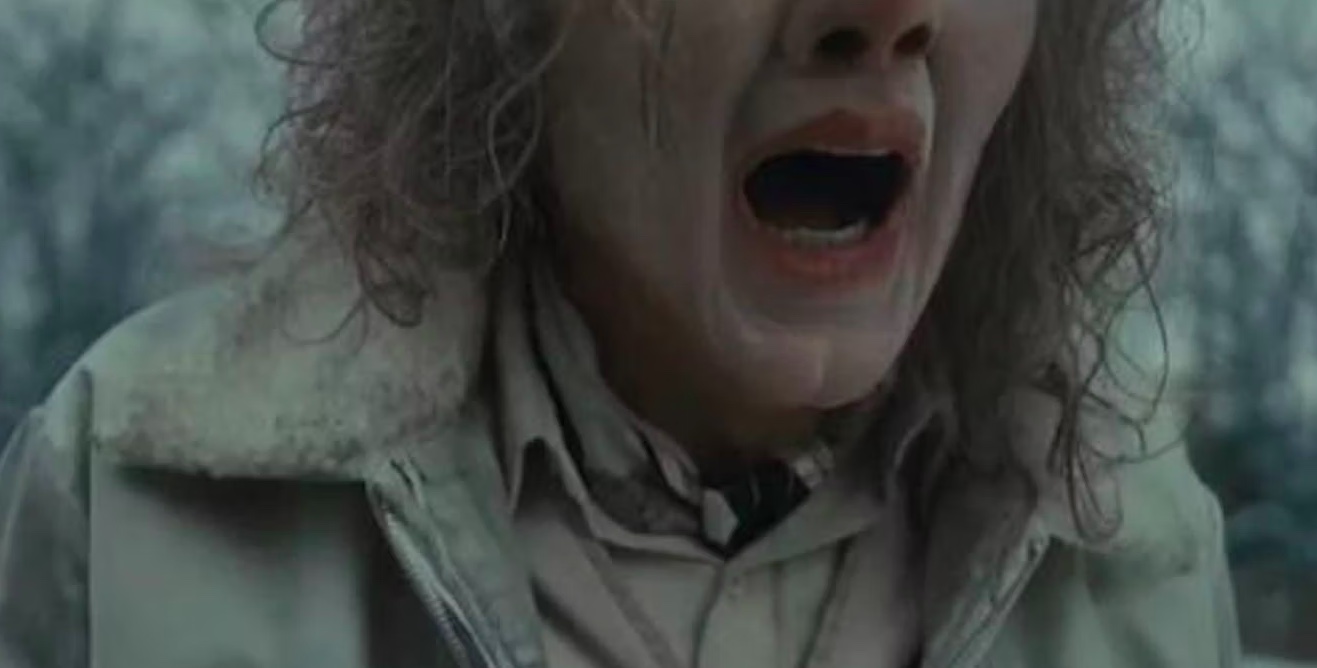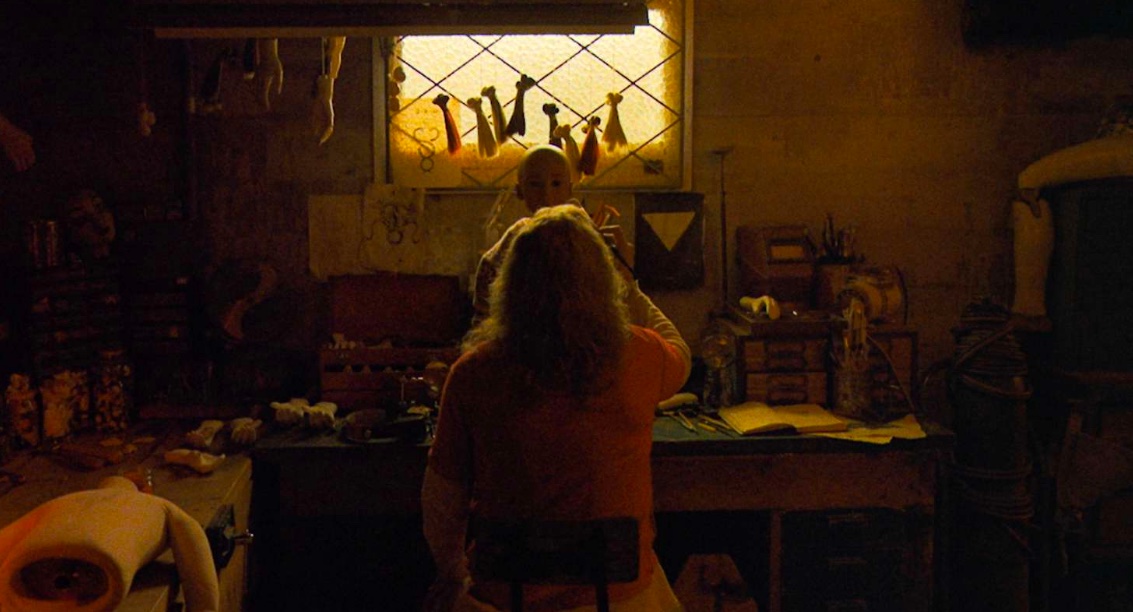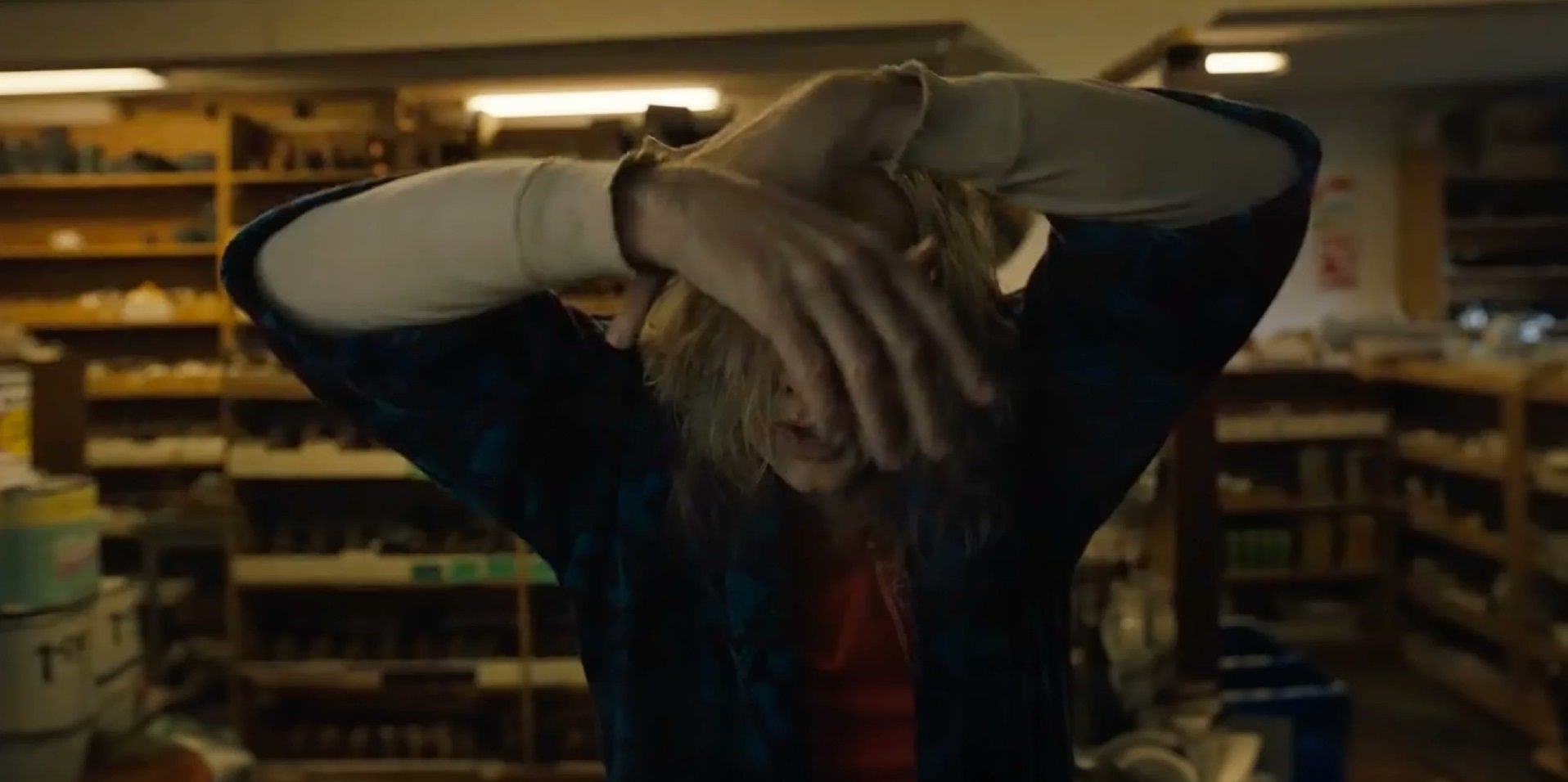Starring Nicolas Cage as the titular character, ‘Longlegs’ presents the audience with a terrifying serial killer who comes from the stuff of nightmares. The film focuses on the investigation into the murders committed by Longlegs and how a rookie FBI agent, Lee Harker, becomes instrumental in figuring out who he is and what he really wants. The film takes many twists and turns and delivers some truly horrifying moments in the process, but the most memorable thing about it is Longlegs himself. Cage portrays him as an unhinged, dangerous killer, sending chills down one’s spine while making one wonder how the writer came up with this character. SPOILERS AHEAD
Longlegs was Initially a Side Character in Osgood Perkins’ Different Film

‘Longlegs’ is written and directed by Osgood Perkins, and although he has infused the story with some highly symbolic autobiographical elements, the story itself remains entirely fictional. The character of Longlegs had been in Perkins’ mind for a long time. Initially, he was a side character in some story that Perkins was working on. The director described Longlegs as a “shadowy figure” who kept lurking in his mind, but he had no idea where this character fits in the story.
What the writer did know about Longlegs was him being “weird, uneasy” with “performance anxiety.” He knew that Longlegs would be someone who would seek out children and talk to them, and he even came up with all sorts of conversations that the character would have. Still, it took a long time for Perkins to find a story worthy of introducing the character to the world, so when he finally decided to make a film that would sit along the lines of ‘The Silence of the Lambs,’ he knew it was Longlegs’ time to be in the spotlight.
While he was supposed to be the villain, Perkins wanted Longlegs to have a duality that would make him more grounded. If Longlegs was to be the evil omnipresent character who scares everyone, he would also have to be someone who feels like they’ve been doing their job for too long and have a sense of tiresomeness about them. A reference that Perkins used was Darth Vader, who has turned into a monstrosity when it comes to his appearance and his actions, but there is a remnant of his original self underneath, a trace of who he used to be, which connects him to his humanity.
The Name of Longlegs Has Intentional Obscurity

There are a lot of things that are creepy about Cage’s character in the movie, but the name is enough to give the audience an idea of how creepy he can be. The reason behind his choice of name is never explicitly stated in the film, but the way he is introduced adds more meaning to his title. The only time he says “long legs” is in the first scene, while talking to young Lee, apologizing for wearing his long legs that day. What makes it more interesting is that his face doesn’t appear in the frame, not until he bends down. Through this, he is presented from the perspective of a child, putting the audience in the shoes of the young girls who are later killed by their fathers. It’s a smart way to have the audience in the mindset of the victim while increasing the horror factor of the character.
The choice of calling him Longlegs was quite random and doesn’t necessarily connect to something about the character. Perkins liked the way the word sounded and created a creepy feeling for the audience. The word also feels outdated for the modern setting and fits more with the 70s and 80s vibe, which is what Perkins wanted for the story. The fact that the audience never really gets to know why he calls himself “Longlegs” is intentional because the director thought that it adds to the sense of mystery, underlining the fact that we don’t really know anything about the killer. The obscurity elevates the terror of the character.
Nicolas Cage was Heavily Involved in Developing the Character of Longlegs

While Perkins had created Longlegs on paper, he needed someone who could bring out the complexity of the character with finesse on the screen. When Nicolas Cage read the script, he immediately came on board to play Longlegs. Due to Cage’s reputation as an actor, Perkins was ready to give him free rein. The director was ready to let him do his own thing if that’s what he wished, but Cage refused to ad-lib. He was so impressed by the writing and found a cadence in it, which he wanted to bring on the screen.
Cage and Perkins collaborated to create the unique appearance of the character. They worked on everything from the way Longlegs looks to how he sounds to how he walks and talks. Cage revealed that he looked towards his mother (who passed away in 2021) and her experience with mental illness to find the soul of his character. He saw Longlegs as a man who had been overtaken by something else that worked through him. It’s his body, but it’s not really who he used to be anymore. He saw this as a reflection of his mother’s struggle and connected his character’s situation to her. This also allowed him to empathize with an otherwise irredeemable character.
When it came to the looks of the character, Cage wanted something “very androgynous, he-she look, glam rock look.” He described Longlegs as “almost prophet, in the Fellini movie Juliet of the Spirits.” He and Perkins wanted him to be the opposite of aggressive, which brought the idea of adding a feminine aspect, especially to his voice. Another thing that Cage was keen on was Longlegs’ face. He wanted to present the look of someone who has been ruined by plastic surgery. The actor was ready to be buried under prosthetics if that’s what it took to get the right look. He and Perkins worked closely with the make-up artists to create a look that represented “the embarrassment of plastic surgery, the shame that one wears with badly done plastic surgery.”

Because his looks are such an important part of his narrative, Perkins wanted to keep it as much a secret as possible. He didn’t want it to be revealed in the trailers, and he kept it away from focus and obscured for a good part of the film. This feeling of Longlegs being “slightly out of frame” gave the film a sense of his lingering presence, even when he is not in the scene. This move was inspired by David Fincher’s ‘Se7en,’ where despite appearing in barely three scenes, John Doe’s presence is felt throughout.
Keeping up with this trend, Cage decided to keep his distance from the rest of the cast and crew. He didn’t appear in front of any of them until Longlegs is caught by the cops and brought in for interrogation. He wanted the first meeting of the characters to feel true to form, so it was on the day that the scene was shot that Cage appeared dressed as Longlegs, inducing a sense of shock and terror in the cast that reflected in their performance and making the scene more meaningful.
Read More: Dolls in Longlegs, Explained: What Does the Doll Do? What is in the Brain Ball?


You must be logged in to post a comment.